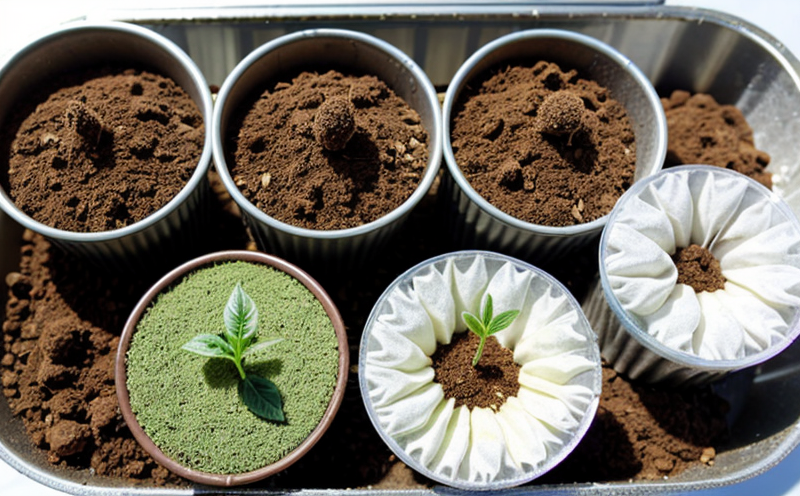Seed Antioxidant Activity Testing
The testing of seed antioxidant activity is a critical component in ensuring the quality and viability of seeds used in agricultural and forestry applications. This service involves evaluating the inherent ability of seeds to protect themselves from oxidative stress, which directly impacts their germination rates and subsequent plant health.
Antioxidants play a vital role in preventing cellular damage caused by reactive oxygen species (ROS). In seeds, antioxidants are essential for maintaining seed integrity during storage and ensuring that they can undergo successful germination once planted. This service is particularly important for crops where seed quality significantly influences the yield and resilience of the resulting plants.
Our laboratory uses advanced analytical techniques to measure various aspects of antioxidant activity in seeds. We employ methods such as the ABTS radical scavenging assay, DPPH (1,1-diphenyl-2-picrylhydrazyl) method, and FRAP (Ferric Reducing Antioxidant Power) assay, which are internationally recognized for their accuracy and reliability.
For this service, the specimen preparation involves several steps. Initially, seeds are cleaned to remove any foreign materials that could interfere with the testing process. Subsequently, they undergo a series of extraction procedures depending on the specific antioxidant being measured. After extraction, the samples are analyzed using high-performance liquid chromatography (HPLC) and other relevant instruments.
The results from these tests provide valuable insights into the intrinsic antioxidant capacity of seeds. This information is crucial for quality managers in ensuring that only high-quality seeds are used in production processes. Compliance officers can use this data to meet regulatory standards, while R&D engineers can leverage it to develop improved seed varieties with enhanced antioxidant properties.
In summary, seed antioxidant activity testing is an essential service that supports the agricultural and forestry sectors by providing actionable data on seed quality. This information helps stakeholders make informed decisions about seed procurement and breeding programs, ultimately contributing to more robust crop yields and healthier plant life.
Why It Matters
The importance of seed antioxidant activity testing cannot be overstated as it directly affects the performance and longevity of crops. Seeds with higher antioxidant levels are better equipped to resist oxidative stress, leading to improved germination rates and stronger plants once they have emerged from the soil.
In regions prone to environmental stresses such as high temperatures or periods of drought, seeds with robust antioxidant defenses can maintain their viability over longer storage durations. This is particularly beneficial for crops that need to be stored before planting due to seasonal variations or logistical constraints.
From a practical standpoint, this service ensures that the seeds used in agricultural and forestry projects meet stringent quality standards. By identifying seeds with optimal antioxidant activity, stakeholders can enhance their chances of achieving successful plantings and healthy growth cycles. This, in turn, contributes positively to food security and sustainable land use practices.
Moreover, understanding seed antioxidant activity allows for better breeding programs aimed at creating varieties that are more resilient to environmental challenges. Such advancements not only benefit immediate agricultural needs but also contribute to long-term ecological sustainability by promoting healthier ecosystems.
Benefits
- Promotes Seed Quality: Ensures seeds have the necessary antioxidants to withstand storage and improve germination rates.
- Sustains Crop Resilience: Helps in developing crops that can better cope with environmental stressors like heat or drought.
- Increases Yield Potential: By enhancing plant health through improved seed quality, overall crop yields are maximized.
- Breeding Improvements: Provides valuable data for breeding programs focusing on creating more resilient and productive crops.
- Regulatory Compliance: Ensures adherence to international standards related to seed quality and safety.
- Eco-friendly Practices: Supports sustainable agriculture by promoting robust plant health through optimal seed selection.
International Acceptance and Recognition
The testing of seed antioxidant activity is widely recognized and accepted across various international standards. The International Organization for Standardization (ISO) provides guidelines that laboratories must follow to ensure the accuracy and consistency of their tests. Specifically, ISO 7146-1 specifies methods for determining the germination capacity of seeds, which includes assessing their antioxidant status.
Other internationally recognized standards include those from ASTM International, EN, IEC, and others. These organizations contribute significantly to establishing benchmarks that ensure global consistency in seed quality testing. By adhering to these standards, our laboratory ensures that its results are credible and comparable on a worldwide scale.
The acceptance of such tests is not limited to just compliance with regulations but also extends to academic publications and industry reports where accurate data plays a crucial role. This recognition underscores the importance of this service in both research and practical applications within agriculture and forestry.





